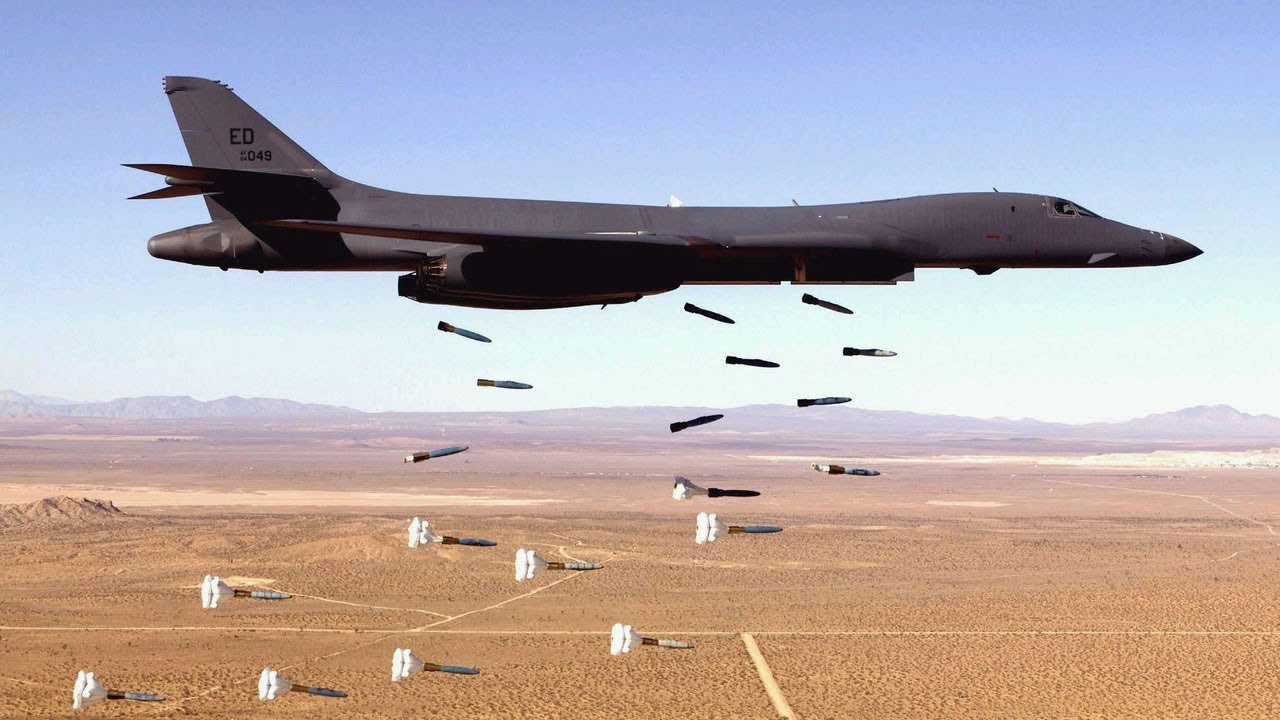An unprecedented episode of military brinkmanship between the United States (US) and Russia was reported on October 24. Two instances of Russian fighters intercepting US Air Force (USAF) aircraft took place one after the other in different sub-theatres, almost within a few hours of the other.
First, a Russian Air Force (RuAF) Sukhoi Su-27 fighter intercepted two B-1B Lancer strategic bombers over the Baltic Sea. In the other event, another Su-27 intercepted an RQ-4B Global Hawk intelligence-surveillance-reconnaissance (ISR) drone over the Black Sea.
The Russian Ministry of Defense (RuMoD) said both the US jets were heading towards the internationally recognized border of the Russian Federation but turned back after the Su-27s were scrambled to intercept them.
The incident comes close on the heels of the October 19 instance when a Su-27 intercepted an RC-135 Rivet electronic warfare (EW) aircraft and two Eurofighter Typhoons.
In a rare step, it then released a video from the Su-27’s cockpit showing the Typhoons peeling off while the RC-135 maintained its direction before presumably heading back too.
Su-27s Intercepts B-1B Lancer & RQ-4B Global Hawk
The first update from the RuMoD came at 7:15 pm on its Telegram channel on October 24, where it said Russian airspace control systems “detected two aerial targets approaching the state border of the Russian Federation over the Baltic Sea.”

Controllers then scrambled one Su-27 fighter jet “from air defense duty force to identify the air target and to prevent a violation of the state border of the Russian Federation.” The Su-27 subsequently identified the aircraft as two B-1B strategic bombers of the US Air Force.
RuMoD described the bombers then making a “u-turn” away from the border, with the Su-27s returning safely to the home airfield. It clarified that there was “no violation” of the state border.” Similarly with the RQ-4B Global Hawk, a Su-27 was “scrambled,” possibly from an air base in Crimea, which identified the make of the Unmanned Aerial Vehicle (UAV). The drone, too, turned away as the Su-27 approached.
Dynamics Of Baltic & Black Sea Theaters
Both flights are significant in their own right, given the individual military and strategic undercurrents of each Baltic Sea and Black Sea theater. In the former, the US and NATO have begun maintaining a slightly aggressive posture in the air for their constraints on the sea, where Russia conducts live-fire aerial and naval drills from Kaliningrad.
This is also a rare occasion that a frontline strategic bomber like the B-1B Lancer was used to conduct a flight over the Baltics to deter Russia.
While the interception by Russian fighters was anticipated, the intention was not to cross into the border even if the Su-27 fighter would not have taken off. It was only to signal deterrence to Moscow.
But in the Black Sea, the dynamics are slightly more escalatory since drones are frequently used to collect targeting data and electronic intelligence (ELINT) on Russian air defense radar placements and frequencies. Ukraine uses the data to conduct its unmanned naval drone strikes on Russia’s Black Sea Fleet (BSF).
Russia has long considered the use of particular mission aircraft like the Rivet, MQ-9 Reaper, and E-3 Sentry Airborne Warning Control System (AWACS) that technically back Ukraine as far greater involvement than merely arming it and just short of direct participation. The data from the aircraft is also processed and analyzed by NATO and US operators and analysts unofficially present on the ground in Ukraine.
With the data support leading to Ukrainian drone attacks inside internationally recognized Russian territory in Moscow, Belgorod, and the Kremlin, a section of Russian strategists had long called for shooting the NATO aircraft down.
They argue that legitimate Russian territory is threatened, while Moscow never attacked any NATO member and ensured the war does not escalate. But President Vladimir Putin has been known to be open to talks, diplomacy, and ending the war – subject to the West officially promising to halt all arms supplies to Kyiv permanently.
A midway, therefore, seemed to have been found when the BSF moved to Novorossiysk from Sevastopol, where a NATO-backed Ukrainian attack on legitimate Russian land would justify a strike on one of these particular mission aircraft.
NATO can be painted to have provoked Russia and, in theory, would be diplomatically constrained from invoking the bloc’s Article 5. As per the clause, all member states are legally bound to rush to the aid of the one attacked. An attack on one member is considered an attack on the entire group.
Russia Heading For A Collision Course With NATO?
Thus, any escalation between NATO and Russia would likely be a result of activities in the Black Sea. The RC-135 Rivet-Eurofighter Typhoon from October 19 and the October 25 RQ-4B Global Hawk interceptions can be considered as the US’s way of testing whether Russia would be willing to defend itself at the risk of activating Article 5 and colliding with NATO.
The only similarity it shares with the Baltic Sea theater is the deterrent and aggressive posture in the air, owing to disadvantages on the sea. The BSF is still far from being damaged.
Except for losing one warship and a submarine, no capital ship has been sunk, but most of them are in the harbor. The fight against Ukraine’s unmanned kamikaze boats is being conducted by smaller and mid-sized patrol vessels and a whole fleet of naval aviation, including Kamov Ka-27 helicopters, Su-30, and MiG-29 fighters. Ukraine has been unable to physically threaten Crimea in a way that promises to oust Russia from the peninsula.
- The author can be reached at satamp@gmail.com
- Follow EurAsian Times on Google News